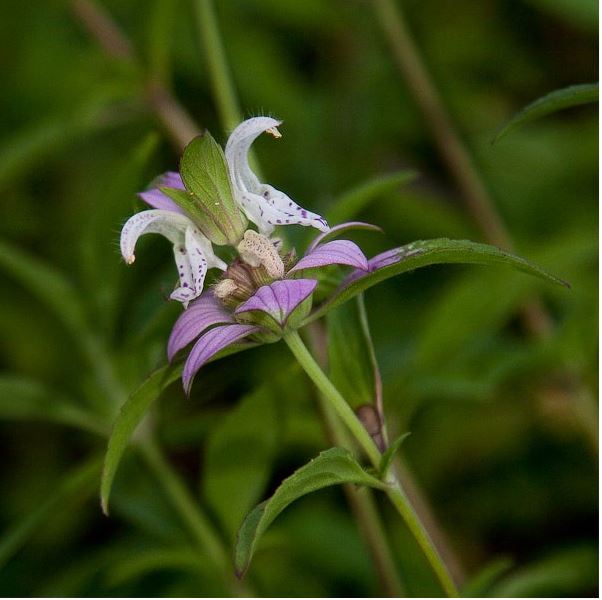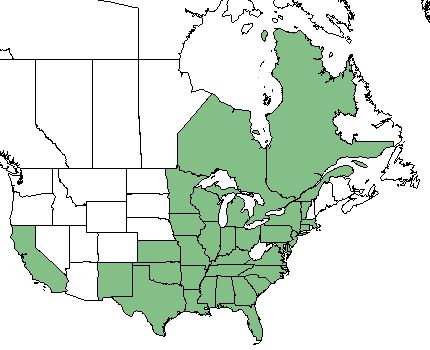Difference between revisions of "Monarda punctata"
(→Description) |
(→Distribution) |
||
| Line 26: | Line 26: | ||
==Distribution== | ==Distribution== | ||
| + | This species is found from New Mexico and Kansas, eastward to Florida, northward to Vermont and Massachusetts, and inland to Iowa and Minnesota. Exceptions to this are Delaware and West Virginia, where no mounted specimens have been reported to the USDA. It also occurs in the Canadian provinces of Ontario and Quebec and has a disjunct population in California.<ref name="USDA"/> | ||
| + | |||
==Ecology== | ==Ecology== | ||
===Habitat=== <!--Natural communities, human disturbed habitats, topography, hydrology, soils, light, fire regime requirements for removal of competition, etc.--> | ===Habitat=== <!--Natural communities, human disturbed habitats, topography, hydrology, soils, light, fire regime requirements for removal of competition, etc.--> | ||
Revision as of 20:05, 29 January 2018
| Monarda punctata | |
|---|---|

| |
| Photo by John B | |
| Scientific classification | |
| Kingdom: | Plantae |
| Division: | Magnoliophyta - Flowering plants |
| Class: | Magnoliopsida - Dicots |
| Order: | Lamiales |
| Family: | Lamiaceae |
| Genus: | Monarda |
| Species: | M. punctata |
| Binomial name | |
| Monarda punctata L. | |

| |
| Natural range of Monarda punctata from USDA NRCS Plants Database. | |
Common Names: Arkansas horse mint; eastern horse-mint; hairy-stem horse mint;[1] spotted beebalm[2]
Contents
Taxonomic Notes
Varieties: M. punctata var. arkansana; M. punctata var. punctata; M. punctata var. villicaulis[1][2] M. punctata var. correllii; M. punctata var. coryi; M. punctata var. intermedia; M. punctata var. lasiodonta; M. punctata var. occidentalis[2]
Description
Monarda punctata is a dioecious species, classified as an annual, biennial, and perennial. It grows as a forb/herb or subshrub.[2]
Distribution
This species is found from New Mexico and Kansas, eastward to Florida, northward to Vermont and Massachusetts, and inland to Iowa and Minnesota. Exceptions to this are Delaware and West Virginia, where no mounted specimens have been reported to the USDA. It also occurs in the Canadian provinces of Ontario and Quebec and has a disjunct population in California.[2]
Ecology
Habitat
M. punctata occurs in dryish forests over mafic rock, maritime forests, dunes, roadsides, rocky or sandy woodlands, and disturbed areas.[1]
Phenology
In the southeastern and mid-Atlantic United States, flowering occurs from July through October.[1]